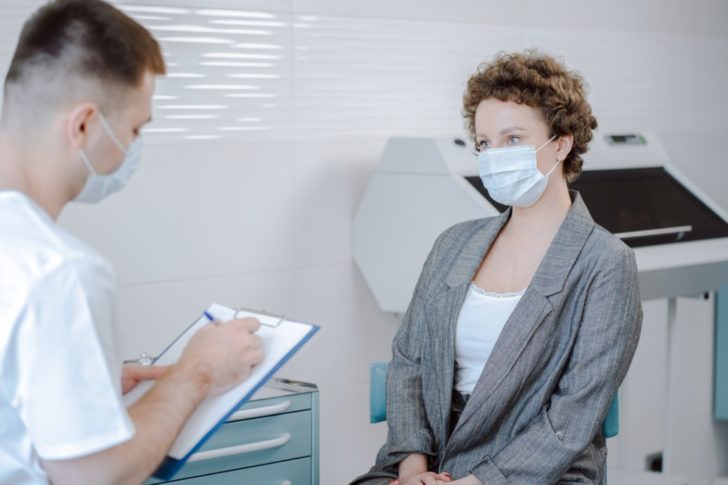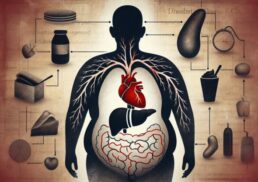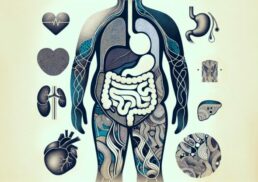Have you ever wondered why some women experience severe pain during intimate moments, making it difficult for them to enjoy a fulfilling sex life? The answer might lie in a condition called vaginismus. As an often misunderstood and underdiagnosed condition, learning about vaginismus is crucial for those who may be silently suffering or supporting a loved one facing this challenge. In this blog post, we will delve into the various aspects of vaginismus, including its types, symptoms, causes, treatments, and coping strategies.
By the end of this post, you will gain a comprehensive understanding of vaginismus and feel empowered to address the condition, either for yourself or a loved one. Knowledge is power, and we hope this information paves the way for a pain-free and fulfilling intimate life.
Table of Contents
Short Summary
Vaginismus is a sexual pain disorder caused by involuntary muscle spasms around the vagina.
Diagnosis and treatment of vaginismus requires both physical and psychological components, such as sex therapy, pelvic floor exercises, vaginal dilators and counseling.
Untreated vaginismus can lead to long-term effects including anxiety, fertility difficulties & diminished self confidence. Early diagnosis & treatment is key for positive prognosis.
Defining Vaginismus

Vaginismus is a sexual pain disorder characterized by involuntary muscle spasms around the vagina during penetration, resulting in pain and discomfort during sexual intercourse, tampon insertion, or medical examinations. It is estimated that 1%-6% of women are affected by this condition. However, many individuals with vaginas are reluctant to disclose their symptoms to healthcare professionals, making vaginismus an often underdiagnosed condition.
Addressing the shame associated with discussing sexual dysfunction is the first step to treating vaginismus. Measures such as accompanying a friend to an appointment or requesting to see a female doctor can help enhance the patient’s comfort level during medical appointments for vaginismus. In this way, one can begin the journey towards overcoming the pain and discomfort associated with the condition.
Types of Vaginismus
To better understand and address vaginismus, it is essential to recognize that there are four main types: primary (lifelong), secondary (develops later in life), global (occurs in all situations), and situational (occurs only in specific situations). Each type has its unique characteristics and challenges.
We will discuss these in detail below.
Primary Vaginismus
Primary vaginismus is a lifelong condition that is present from the initial attempt at intercourse, characterized by muscle spasms during any form of vaginal penetration. Individuals may encounter pain, burning, or general muscle spasms, which cease when attempts at vaginal penetration stop. It is not definitively known what causes primary vaginismus, but it is hypothesized that a combination of physical and psychological factors may be involved. These potential physical factors may include muscle tension, nerve damage, or hormonal imbalances. Additionally, psychological factors such as fear, anxiety, or past sexual trauma may be contributing factors.
Treatment options for primary vaginismus, which can cause pelvic pain, include sex therapy, pelvic floor exercises, vaginal dilators, and counseling to address the underlying issues. Taking a multidisciplinary approach to treatment can help individuals with primary vaginismus regain control over their bodies and enjoy pain-free intimacy.
Secondary Vaginismus
Secondary vaginismus is a condition that develops later in life, typically following a traumatic experience or medical procedure. Some women may experience spasms or discomfort related to vaginal penetration intermittently, or only during specific activities such as penetrative sexual intercourse or pelvic examinations. Unlike primary vaginismus, secondary vaginismus occurs in individuals who previously did not feel pain during intercourse.
Identifying and addressing the specific event or trigger that led to the development of secondary vaginismus is crucial for successful treatment. As with primary vaginismus, treatment options may include sex therapy, pelvic floor exercises, vaginal dilators, and counseling, focusing on both the physical and psychological aspects of the condition.
Global Vaginismus
Global vaginismus refers to cases in which the symptoms manifest in response to any type of penetration, regardless of the context. Involuntary muscle contractions in the vagina render penetration uncomfortable or impossible, causing significant distress and discomfort to those affected. The exact cause of global vaginismus is yet to be determined, though it is thought to be a combination of physical and psychological components.
Treatment for global vaginismus typically involves a combination of sex therapy, pelvic floor exercises, vaginal dilators, and counseling. As with other forms of vaginismus, addressing both the physical and emotional aspects of the condition is essential for a successful outcome.
Situational Vaginismus
Situational vaginismus is a particular form of vaginismus that is triggered by certain situations or types of penetration, though not all. It is characterized by an involuntary tensing or spasming of the vaginal muscles in certain circumstances. The precise etiology of situational vaginismus is yet to be determined; however, it is thought to be a consequence of a combination of physical and psychological components, such as fear of pain, anxiety, prior trauma, and unfavorable attitudes towards sexual intercourse. Other indications may include discomfort, difficulty inserting objects into the vagina, and difficulty engaging in sexual intercourse.
Treatment options for situational vaginismus may include sex therapy, pelvic floor exercises, vaginal dilators, and counseling. Identifying and addressing the specific triggers and underlying causes can greatly improve the individual’s experience during penetration and enhance their overall quality of life.
Identifying the Causes
The causes of vaginismus can be physical, emotional, or a combination of both, making it essential to address all aspects of the condition during treatment. Physical causes of vaginismus may include past trauma, endometriosis, vaginitis, or a prior episiotomy. On the other hand, psychological factors associated with vaginismus may include anxiety, relationship issues, or fear of pain.
Understanding the potential risk factors for vaginismus, such as a history of sexual abuse, endometriosis, vaginitis, or a prior episiotomy, can help both individuals and healthcare providers identify the underlying cause and develop appropriate treatment plans.
By recognizing and addressing the root causes of vaginismus, individuals can work towards overcoming the condition and regaining control of their bodies and intimate lives.
Recognizing the Symptoms

Symptoms of vaginismus include pain, discomfort, and difficulty during vaginal penetration, as well as anxiety and avoidance of such activities. Dyspareunia, a type of female sexual dysfunction, is the medical term used to describe persistent pain experienced before, during, or after painful intercourse. It is essential to note that approximately 75% of women experience discomfort during sexual intercourse at some point in their lives, which may be related to sexual pain disorders.
By acknowledging the symptoms and seeking help, those suffering from vaginismus can begin the journey towards a pain-free and fulfilling intimate life.
Diagnosis Process
The diagnosis process for vaginismus involves a thorough medical and sexual history, a pelvic examination, and muscle evaluation. A pelvic exam can be employed to eliminate other potential issues or verify the occurrence of muscle spasms. Muscle evaluation is employed to gauge the strength and coordination of the pelvic floor muscles.
The Diagnostic and Statistical Manual of Mental Disorders (DSM) is the American Psychological Association’s manual of official psychiatric diagnoses. Early diagnosis is crucial to address the symptoms of vaginismus and develop a comprehensive treatment plan that addresses both the physical and psychological aspects of the condition.
Treatment Options
Various treatments for vaginismus have been identified, such as addressing any underlying anxieties or fears, performing pelvic floor exercises, utilizing vaginal dilators, and engaging in counseling. Each treatment option has its unique benefits and focuses on different aspects of the condition, making it essential to explore them in more detail.
Sex Therapy
Sex therapy is a form of counseling or talk therapy that assists individuals and couples in addressing and resolving sexual difficulties or issues related to sexual satisfaction. In the context of vaginismus, sex therapy can provide education about anatomy and the muscles related to vaginismus, helping individuals better understand their bodies and the causes of their discomfort.
Furthermore, sex therapy can instruct relaxation techniques and foster ease during penetration, making it an essential component of a comprehensive treatment plan for vaginismus.
Pelvic Floor Exercises
Pelvic floor exercises, also known as kegel exercises, are exercises that assist in strengthening and relaxing the muscles surrounding the vagina. These exercises can improve control and reduce discomfort, leading to a reduction in the symptoms associated with vaginismus, such as pain and difficulty with penetration. To perform pelvic floor exercises, it is recommended to sit or lie down in a comfortable position and focus on the muscles around the vagina. Contract the muscles for 5-10 seconds, then relax for 10 seconds. This should be repeated 10 times.
Consistency and patience are crucial when performing pelvic floor exercises, as it may take some time to observe results. However, with dedication, these exercises can lead to enhanced control of the vaginal muscles and a significant improvement in the individual’s quality of life.
Vaginal Dilators
Vaginal dilators are cone-shaped devices that assist in stretching and increasing the flexibility of the vaginal muscles. They are utilized to incrementally expand the vaginal muscles, enhancing flexibility and ease during penetration. Utilizing vaginal dilators can assist in reducing pain and discomfort during penetration, as well as enhance the flexibility of the vaginal muscles.
For individuals experiencing vaginismus, the use of vaginal dilators offers a non-invasive and gradual approach to increasing their comfort during penetration. By following a prescribed treatment plan with dilators, many individuals can regain control and enjoy a more fulfilling intimate life.
Counseling
Counseling can play a crucial role in addressing any underlying emotional or psychological components associated with vaginismus, such as past trauma or relationship issues. Counseling can take many forms, including individual, couples, and group therapy. By engaging in counseling, individuals can gain a better understanding of their condition, formulate coping strategies, and enhance communication and relationships.
Counseling can provide an essential support system for individuals experiencing vaginismus, helping them to confront and overcome the emotional and psychological barriers that may be contributing to their condition.
Learn more, visit Vaginismus: What It Is and How It Can Be Treated.
Coping Strategies
In addition to treatment options, developing healthy coping strategies can help individuals with vaginismus manage their condition and improve their overall well-being. Open communication with partners is crucial in discussing emotions, apprehensions, and anticipations, as well as exploring alternative methods of being intimate. Utilizing lubrication can help reduce pain and discomfort during penetrative sex, as well as reduce friction and make penetration easier. Alternative sexual activities that do not involve penetration include massage, oral sex, and mutual masturbation.
By implementing these coping strategies, individuals with vaginismus can maintain a fulfilling intimate relationship while working towards addressing the root causes of their condition.
Conditions Similar to Vaginismus
It is essential to be aware of conditions that may present with similar symptoms to vaginismus, such as vulvodynia, dyspareunia, and pelvic inflammatory disease. Vulvodynia is a chronic pain condition characterized by burning, stinging, itching, and throbbing sensations in the vulva. Dyspareunia is a condition characterized by pain during sexual intercourse and may be caused by a range of physical or psychological factors. Pelvic Inflammatory Disease (PID) is an infection of the reproductive organs, typically caused by bacteria, and can be treated with antibiotics.
Recognizing the differences between these conditions and vaginismus is crucial to ensure accurate diagnosis and appropriate treatment, ultimately leading to a better quality of life for those affected.
Long-term Effects and Complications
Potential long-term implications of vaginismus may include anxiety, fertility difficulties, diminished self-confidence, and reluctance to undergo pelvic examinations. Seeking treatment for vaginismus is of utmost importance, as it can have a detrimental effect on relationships and can lead to long-term consequences and complications.
Individuals with vaginismus may be hesitant to receive medical attention due to apprehension about internal pelvic examinations, which can lead to an increased risk of undiagnosed cervical cancer, sexually transmitted infections, and other health concerns. By seeking help and addressing the symptoms of vaginismus, individuals can avoid these long-term effects and complications, ultimately leading to a healthier and more fulfilling life.
Prevention and Prognosis
While there is no known prevention method for vaginismus, early diagnosis and treatment can lead to a positive prognosis, with many individuals regaining the ability to enjoy penetrative activities without pain. Successful treatment requires patience and dedication, and it is possible to have satisfying and enjoyable sexual interactions by engaging in activities that do not cause vaginismus.
It is essential to recognize the importance of addressing vaginismus as soon as symptoms arise. By doing so, individuals can work towards a future where they can enjoy a fulfilling intimate life free from pain and discomfort.
Summary
In conclusion, understanding vaginismus is crucial for those who may be silently suffering or supporting a loved one facing this challenge. By learning about the various types, symptoms, causes, and treatments, individuals can take control of their condition and work towards a pain-free and fulfilling intimate life. Addressing vaginismus involves a comprehensive approach that includes professional help, coping strategies, and perseverance. By taking these steps, individuals can overcome the challenges of vaginismus and live their lives to the fullest.
Frequently Asked Questions
What causes vaginismus?
Vaginismus is often caused by anxiety or fear related to having sex, and can be aggravated by bladder infections, UTIs, yeast infections, anxiety disorders, or injuries sustained during childbirth.
These conditions can lead to a tightening of the pelvic floor muscles, which can make it difficult or even impossible to have penetrative sex.
Can vaginismus be cured?
Vaginismus can be successfully treated with a success rate of over 90%.
However, it requires patient dedication and commitment to follow the treatment plan.
Are there any non-invasive treatment options for vaginismus?
Yes, there are non-invasive treatment options for vaginismus, such as pelvic floor exercises, vaginal dilators, and counseling.
These treatments can help reduce the symptoms of vaginismus and help the patient to regain control over their body.
Counseling can also help to address any underlying psychological issues that may be contributing to the condition.
What are some alternative sexual activities for individuals with vaginismus?
For individuals with vaginismus, alternative sexual activities include massage, oral sex, and mutual masturbation, which can still provide pleasure without penetration.
How can I support a partner with vaginismus?
Be open and understanding, and explore alternative ways of being intimate to support a partner with vaginismus.
Try different activities that don’t involve penetration, such as massage, cuddling, and kissing. Talk to your partner about what they feel comfortable with and what they don’t. Respect their boundaries.









